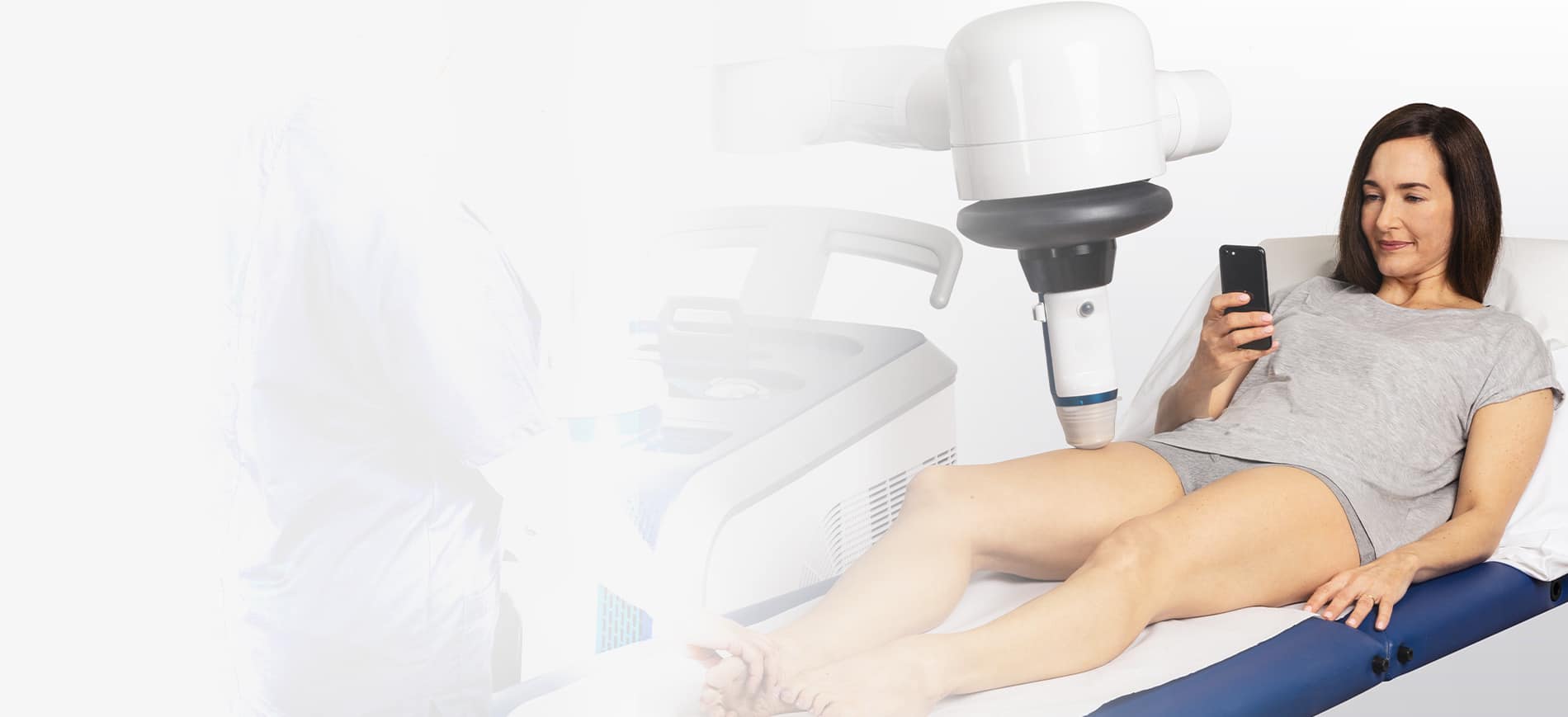Have varicose veins appeared on your legs since you started being pregnant? Here we’ll answer all your questions on the matter: causes, prevention, available treatments…
As a reminder, varicose veins are swollen, enlarged veins. Or, in medical terms, sinuous dilatations of the superficial veins: the saphenous vein and its branches. Under the effect of gravity and the dilation of the veins in diameter, the blood which, normally, circulates from the bottom to the top, tends to stagnate or even to flow back into these veins, because the valves do not function correctly anymore. Varicose veins are considered the most frequent manifestation of chronic venous insufficiency.
In 2020, the High Authority of Health estimated that between 20 and 30% of the French population was affected by varicose veins. Moreover, they undeniable affect women more often during pregnancy.
Why do varicose veins appear on the legs during pregnancy?
Varicose veins are one of the many ailments that can occur during pregnancy, for various reasons.
- First of all, the amount of sex hormones secreted by the body is much higher during this period. Estrogen promotes the appearance of edema and progesterone tends to dilate the veins significantly. This ultimately favors the appearance of varicose veins.
- Excess weight in pregnant women is also a factor likely to cause edema, heaviness, and therefore varicose veins. The compression of the veins of the small pelvis by the growing uterus also explains the occurrence of this type of pathology.
- In addition, women who develop primary varicose veins during pregnancy have a hereditary background in the vast majority of cases.
- It is also interesting to note that the risk factor increases with the number of pregnancies carried to term. It is 23% during the first pregnancy, 27% during the second and third pregnancies and 31% during the fourth pregnancy.
How to prevent varicose veins during pregnancy?
Doctors make several recommendations at the beginning of pregnancy to prevent varicose veins.
- A healthy lifestyle can often delay the appearance of varicose veins: drink a lot of water, walk regularly and do sports (with your doctor’s consent). Walking, swimming, yoga and cycling are all good ways to activate blood circulation.
- It is also strongly advised to pay attention to the position of your legs: raise them when you are lying down and avoid crossing them.
- Do not hesitate to do some lymphatic drainage treatments to lighten and decongest the legs.
- And finally, avoid the heat as much as possible since during pregnancy the legs tend to swell due to the heat and the increased weight.
- Also, it is interesting to know that some fruits have proprieties to fight against varicose veins. Oranges and more generally citrus fruits are rich in rutin and quercitrin, two components that are beneficial for leg circulation. And grapes are very rich in flavonoids, a substance that improves venous return. It is also recommended to eat them with the seeds, which are rich in substances with antioxidant and draining effects.
How to treat varicose veins during pregnancy?
If the doctor can usually indicate non-invasive techniques, sclerosis or surgery, the latter are formally contraindicated during pregnancy.
- The treatment of varicose veins during pregnancy is based on 3 main axes : weight control, physical activity and elastic compression using compression stockings. The latter exert pressure on the veins, which increases the blood flow in the legs.
- Osteopathy can help since it improves the drainage of the lower limbs and thus limits venous insufficiency.
- Finally, it is also recommended to apply cold water on the legs to reduce swelling and stimulate blood circulation.
Post-partum, it is necessary to wait between 3 and 6 months to have another varicose veins check-up. In the meantime, many varicose veins will disappear spontaneously, which is why it is important not to rush.
Pregnancy varicose veins: when should you be concerned?
Varicose veins may bother you and cause pain, but they pose little risk to your health and rarely cause circulatory problems. However, it is important to consult your doctor after noticing a sensitive and red area on the surface of a varicose vein, accompanied by fever, leg pain or a rapid pulse.
Indeed, the main complication of varicose veins that can occur during pregnancy is varicose thrombosis, which corresponds to the formation of a clot in a varicose vein, and varicose ulcer. The latter is the result of changes in the appearance of the skin on the ankles. Indeed, after several years of evolution, varicose veins will cause a brownish coloring of the ankle which increases the fragility of the tissues. A shock to this fragile skin can lead to the appearance of a wound that will take several months to heal, which is why it is essential to consult a phlebologist or vascular surgeon in this case.
The good news
First of all, the appearance of varicose veins during pregnancy is not systematic. A pregnant woman who has no family history of varicose veins, who is not overweight and who practices regular physical activity does not have a very significant risk of developing varicose veins.
Moreover, for some women, varicose veins may improve or disappear after delivery, especially if they did not have them before becoming pregnant.
Want to learn more about the symptoms of varicose veins and how they can be treated? It’s right here!






